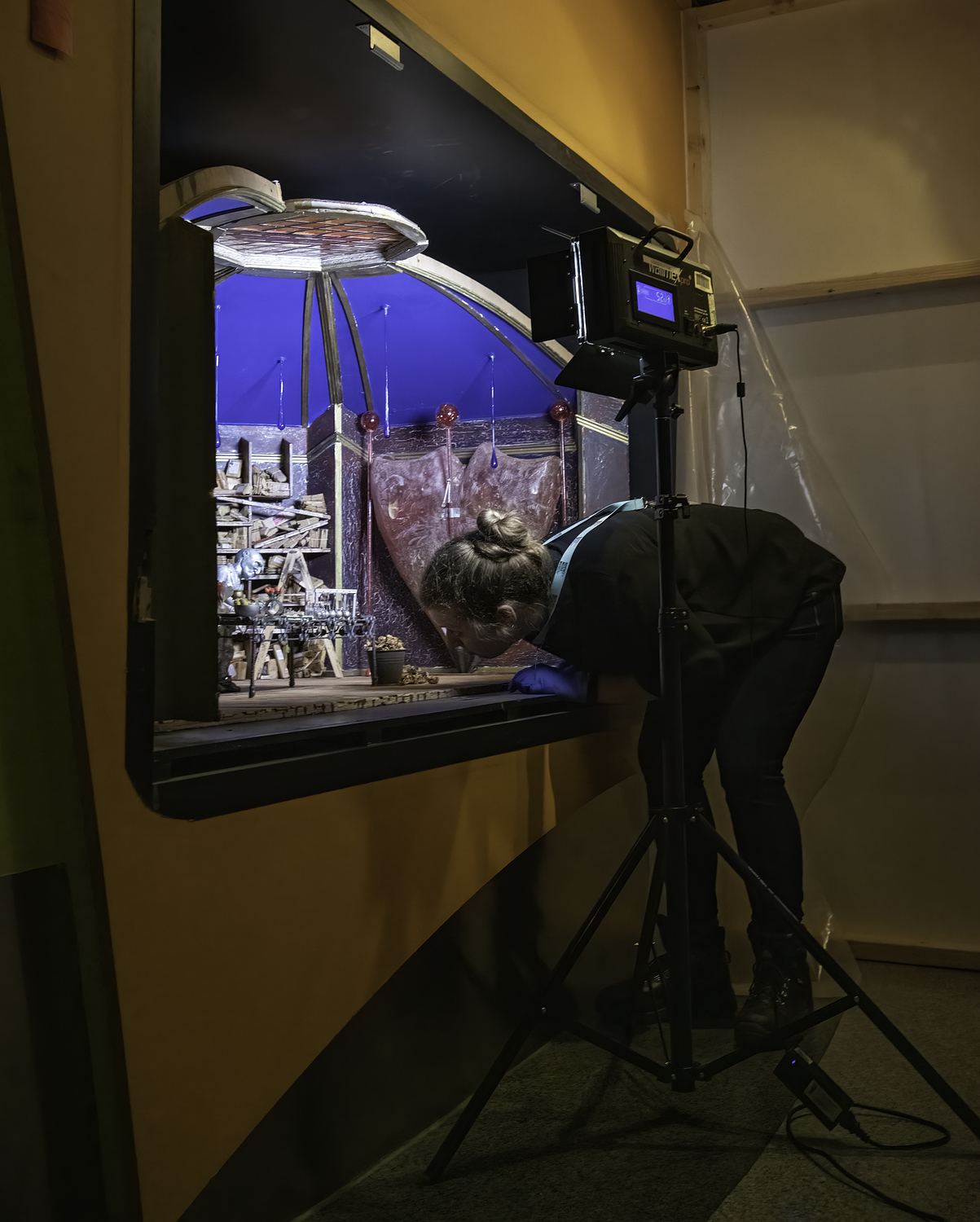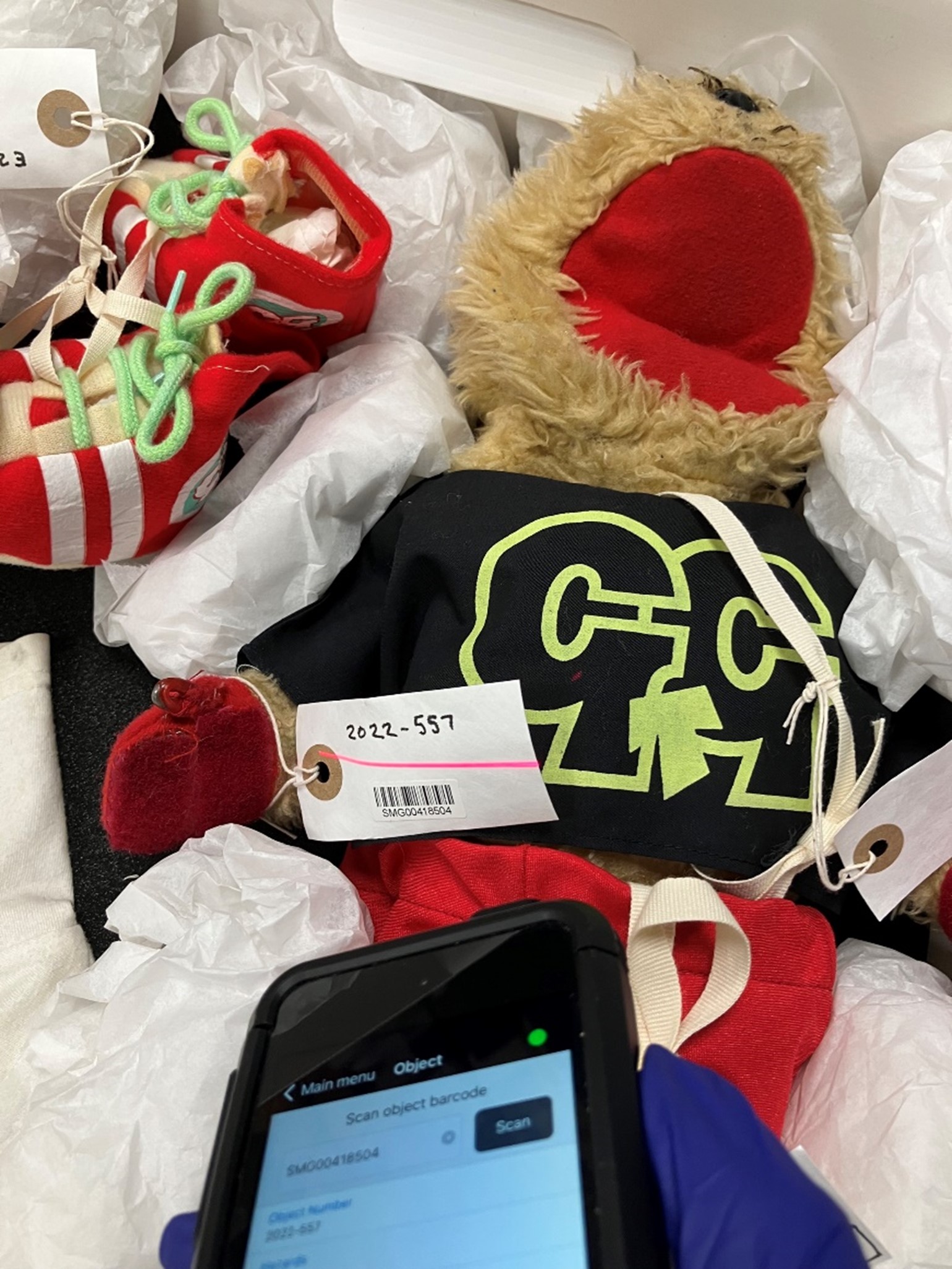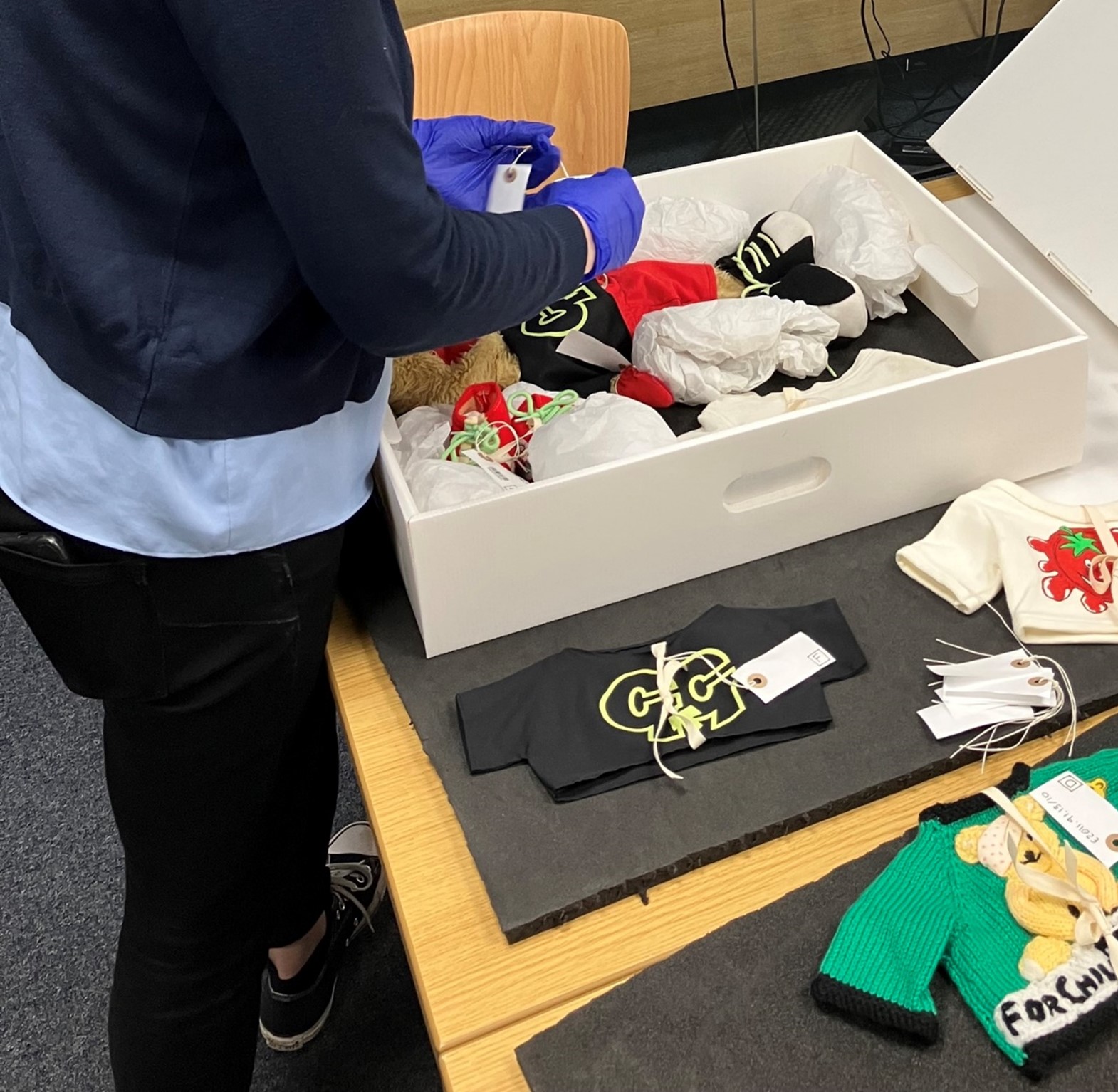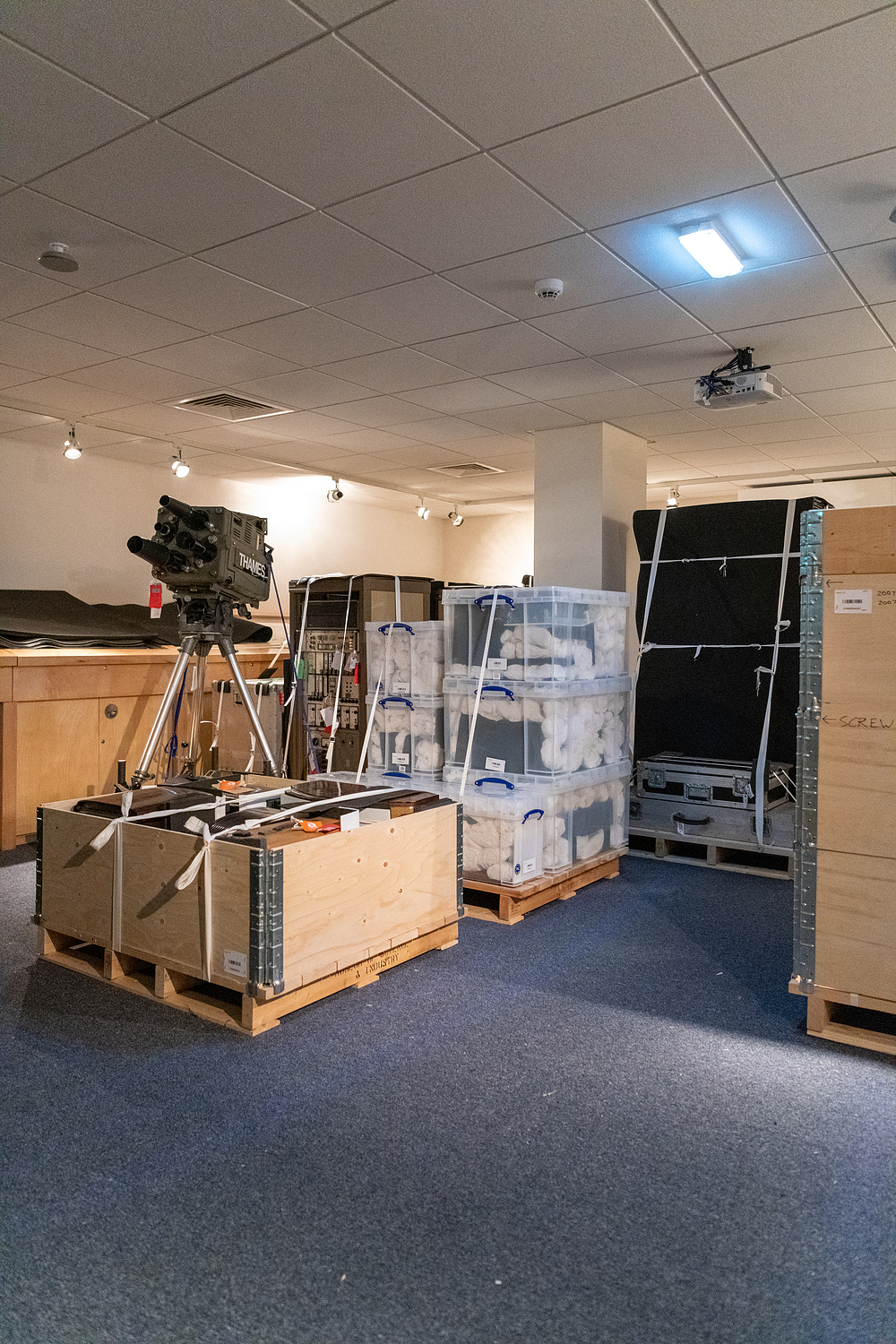If you’ve wondered what happens behind the scenes now that the doors are shut, wonder no more! The collections team—one of many teams preparing the museum for reopening—have been hard at work decanting the galleries, and are here to tell you more.
What is a decant?
The decant portion of the Sound and Vision project involved the collections team deinstalling the objects currently on display and storing them safely away before the building work commences. If you visited just before the closure, you may have noticed temporary walls in the Animation and TV Heaven galleries. These gave us the opportunity to start deinstalling some of our collection before the museum closed (and to listen to some wonderful visitor renditions of the Wombles’ theme song as we did so!).

The Process
Our decant was undertaken in a four-step process: checking for hazards; updating and improving our records; reporting on the condition of the objects; and packing them for storage.
The first step was all about safety. Here we checked the objects for any hazards that we may have needed to consider when packing and moving them, for example taking note of any sharp edges. Additionally, some objects in our collection have been made using materials we now know to be dangerous, such as asbestos in machinery, or or an irritant to some individuals, such as latex in bendable models. As such these required surveying, labelling and in some cases, treatment to ensure they were safe to handle.
Next, we assessed the objects’ records on our collection management database to make sure that each record meets our standards. These records feed into our collection website, which allows visitors to learn more about our objects, so it is important to make them as complete and accurate as possible.
Condition reporting was the next step, and this is where we took a good look at our objects to see if there had been any changes in the years that they’ve been on display. The collection has been on display and well-loved for quite a few years, and there are several environmental factors that can have an impact on the condition of objects, such as the amount of light they receive.

Now they have been packed up to return to the stores, they will be able to ‘rest’ in the darkness and will be able to be enjoyed by more visitors in the future. We also took plenty of pictures to make the assessment process easier for future conservators looking at the same objects.
After we assessed the condition of each object, we then packed them for storage. One of the last objects to be packed was the Wombles set in the Animation Gallery. This was very much like packing up a house, as we put all the tiny chairs and tables into sturdy boxes to transport them. However, there was no bubble wrap or newspaper in sight. Instead, we used archival quality materials to help protect our objects from harmful gases as well as bumps and knocks, to ensure they are preserved for the future.
As part of this decant project, we also used technology to make logging our collection’s movements easier. We gave each object (and in some cases, parts of objects!) its own barcode so that we could easily record its location when we moved it into storage, reducing the chance of human error.

Moving Forward
This has been a fascinating project, particularly as we’ve been able to interact with treasured childhood TV puppets and models, but it was not without its challenge. We had to dismantle showcases; figure out how to move big animation sets that didn’t fit in our lift; and used all our might to carry a huge early computer from the Life Online exhibition.
Now we’re looking forward to the next stage—preparing for the installation of the new galleries.
